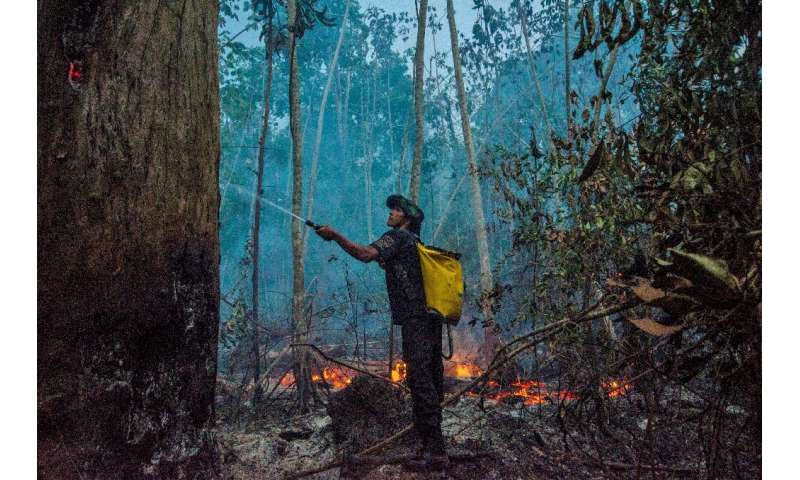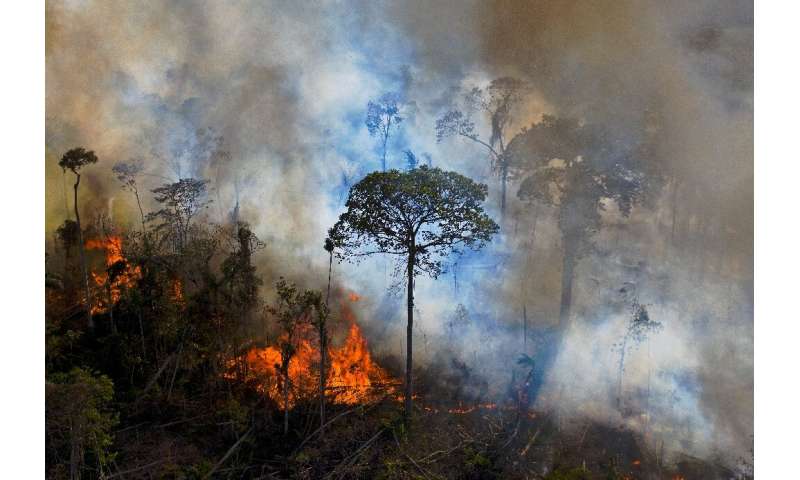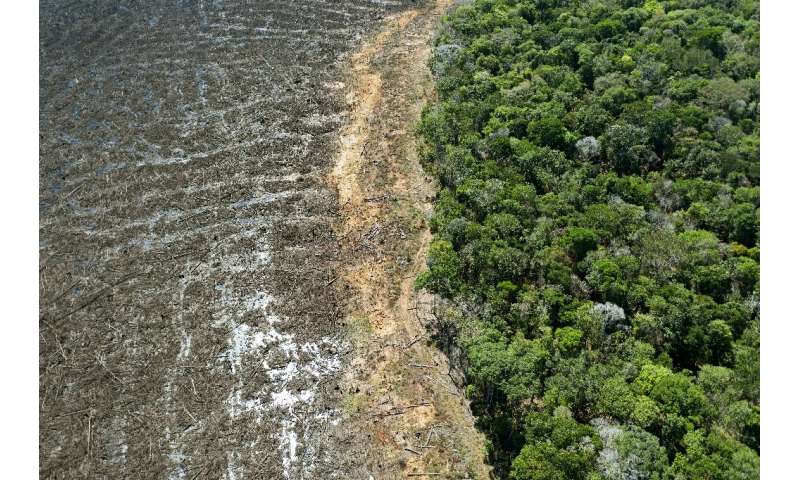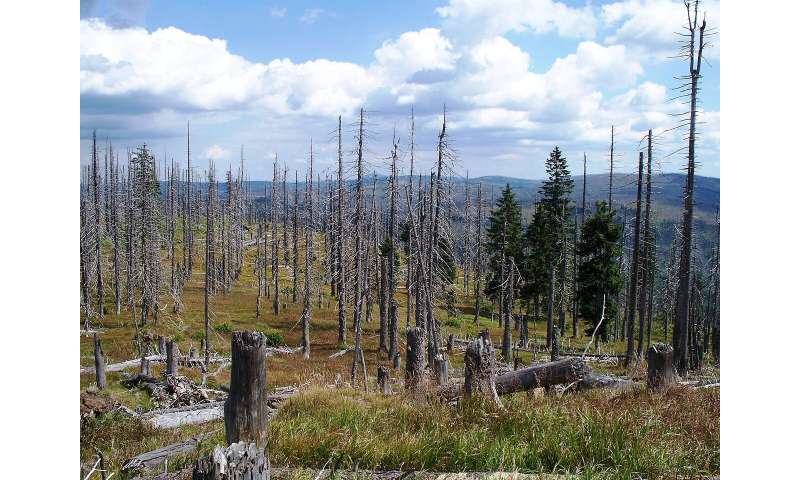Widodo’s jobs bill poses threat to forests, global investors warn Indonesia
In a letter, 35 investors said the legislation could hamper efforts to protect the country’s tropical forests
The government says the bill, passed by parliament on Monday, is needed to streamline regulations in Indonesia
Reuters Published: 5 Oct, 2020
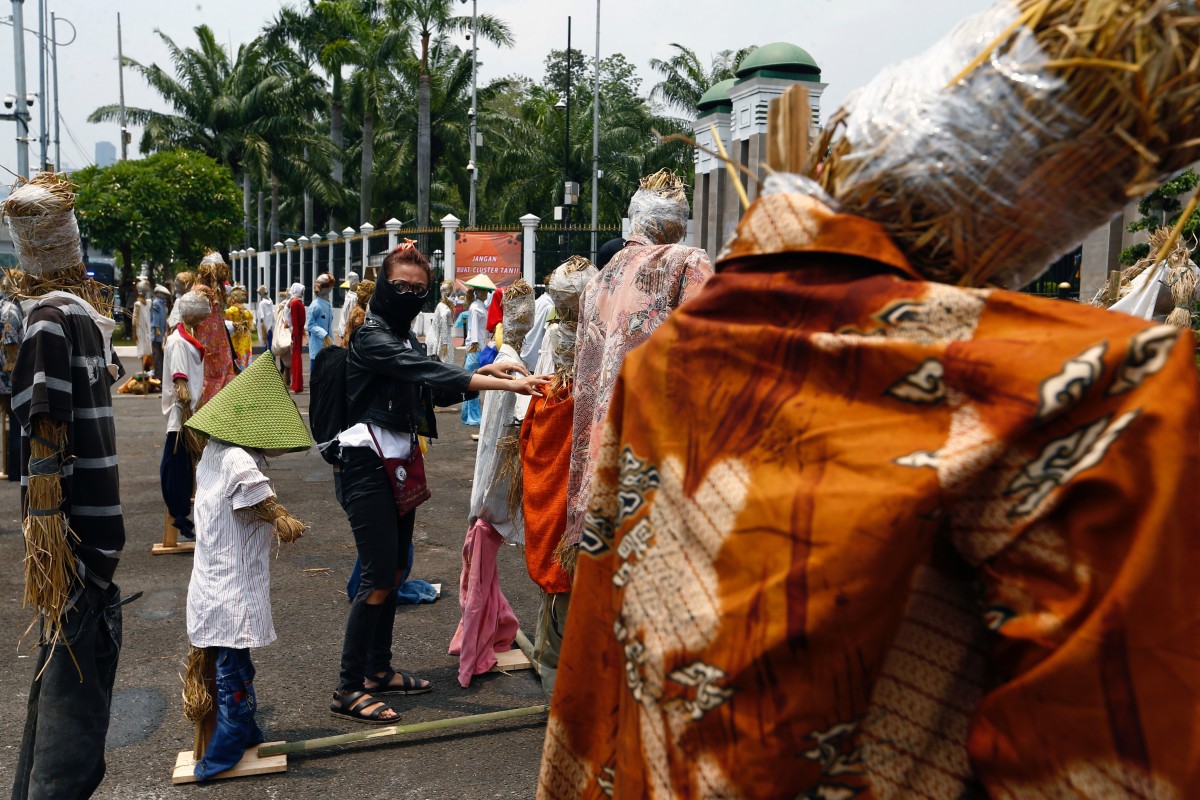
A demonstrator sets up scarecrows for keeping social distancing during a protest outside the Indonesian parliament against the Omnibus bill in Jakarta last month. Photo: Reuters
The investors said they feared the legislation could hamper efforts to protect Indonesia’s forests, which would in turn undermine global action to tackle biodiversity loss and slow
climate change.
Indonesia’s scrapping of migrant worker placement fees: blessing or curse?
28 Sep 2020

“While the proposed regulatory changes aim to increase foreign investment, they risk contravening international best practice standards intended to prevent unintended harmful consequences from business activities that could deter investors from Indonesian markets,” said the letter, sent hours before the bill was passed.
With concerns over environmental breakdown rising up the investor agenda, some asset managers have begun to take a more public stance in urging governments in developing countries to protect the natural world.
In a similar intervention in July, 29 investors managing US$4.6 trillion wrote to Brazilian embassies to demand meetings to call on right-wing President Jair Bolsonaro’s government to stop soaring deforestation in the Amazon rainforest.
In a letter, 35 investors said the legislation could hamper efforts to protect the country’s tropical forests
The government says the bill, passed by parliament on Monday, is needed to streamline regulations in Indonesia
Reuters Published: 5 Oct, 2020

A demonstrator sets up scarecrows for keeping social distancing during a protest outside the Indonesian parliament against the Omnibus bill in Jakarta last month. Photo: Reuters
Global investors managing US$4.1 trillion in assets have warned
Indonesia’s government that a contentious job creation bill passed by parliament on Monday could pose new risks to the country’s tropical forests.
In a letter, 35 investors expressed their concerns, including Aviva Investors, Legal & General Investment Management, the Church of England Pensions Board, Netherlands-based asset manager Robeco and Japan’s largest asset manager, Sumitomo Mitsui Trust Asset Management.
In a letter, 35 investors expressed their concerns, including Aviva Investors, Legal & General Investment Management, the Church of England Pensions Board, Netherlands-based asset manager Robeco and Japan’s largest asset manager, Sumitomo Mitsui Trust Asset Management.
Why are Indonesians protesting the ‘job-creating’ Omnibus Law?
20 Aug 2020
“While we recognise the necessity for reform of business law in Indonesia we have concerns about the negative impact of certain environmental protection measures affected by the
Omnibus Bill on Job Creation,” Peter van der Werf, senior engagement specialist at Robeco, said in a statement.
With President
Joko Widodo’s coalition controlling 74 per cent of seats, parliament passed the bill that the government says is needed to improve the investment climate and streamline regulations in Southeast Asia’s biggest economy.
FASCISM
The new law would ensure the “state’s presence” in the relationship between employers and workers, Airlangga Hartarto, chief economics minister, told parliament on Monday.
A coalition of 15 activist groups, including trade unions, earlier condemned the bill and called on workers to join a planned national strike on October 6-8.
Yusri Yunus, a spokesman for Jakarta police, said that a permit for the protest had not been approved and due to the
Covid-19 situation “we advise all of them not to demonstrate”.
Yusri Yunus, a spokesman for Jakarta police, said that a permit for the protest had not been approved and due to the
Covid-19 situation “we advise all of them not to demonstrate”.
THE WORKERS FLAG IS DEEPEST RED FOR THE BLOOD WE HAVE SHED

Indonesians protest against the Omnibus bill in January. Photo: Joe Cochrane
While recent rallies against the bill have been relatively small, some vowed to press on with protests.
“We will continue to strike nationwide,” said Nining Elitos, chairwoman of the labour group KASBI.
Ahmad Jumali, chairman of the Tanggerang chapter of the Federation of Metal Workers (FSPMI), also said workers planned to shut down production to protest the law.
Workers opposing the bill argue that the legislation would be a “red carpet for investors, widening the power of the oligarchy” that will not only hurt labour protection but also taking land from farmers and indigenous communities.

Indonesians protest against the Omnibus bill in January. Photo: Joe Cochrane
While recent rallies against the bill have been relatively small, some vowed to press on with protests.
“We will continue to strike nationwide,” said Nining Elitos, chairwoman of the labour group KASBI.
Ahmad Jumali, chairman of the Tanggerang chapter of the Federation of Metal Workers (FSPMI), also said workers planned to shut down production to protest the law.
Workers opposing the bill argue that the legislation would be a “red carpet for investors, widening the power of the oligarchy” that will not only hurt labour protection but also taking land from farmers and indigenous communities.
The investors said they feared the legislation could hamper efforts to protect Indonesia’s forests, which would in turn undermine global action to tackle biodiversity loss and slow
climate change.
Indonesia’s scrapping of migrant worker placement fees: blessing or curse?
28 Sep 2020

“While the proposed regulatory changes aim to increase foreign investment, they risk contravening international best practice standards intended to prevent unintended harmful consequences from business activities that could deter investors from Indonesian markets,” said the letter, sent hours before the bill was passed.
With concerns over environmental breakdown rising up the investor agenda, some asset managers have begun to take a more public stance in urging governments in developing countries to protect the natural world.
In a similar intervention in July, 29 investors managing US$4.6 trillion wrote to Brazilian embassies to demand meetings to call on right-wing President Jair Bolsonaro’s government to stop soaring deforestation in the Amazon rainforest.








